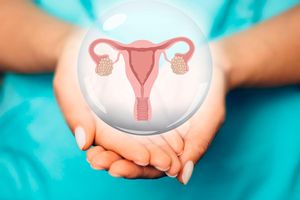The nine months of dramatic body changes during pregnancy

The endocrine system is the key driver of changes in women’s bodies during pregnancy.
What you need to know:
- The creation of a new being is not only restricted to the unborn baby, clearly, the mother undergoes a full transformation too! Let us be kind to mums, they are going through a lot!
Collette* had me clutching my stomach as I doubled over in laughter. Her antenatal clinic visits were always dramatic. This particular day, she was trying to convince her husband to make time the coming weekend to accompany her to her baby bump pictures before she got to whale size, with her nose covering half her face.
Poor Alfred* could not fathom his wife looking anything but beautiful. She was the mother of his son and soon-to-arrive daughter, and she could never look like a whale. But as Collette was very easily prone to letting loose the waterworks, he simply caved in and reorganised his schedule.
What was so funny was Collette’s perception of the pregnancy changes her body was going through. It got me thinking just how confusing it can be, not only for the pregnant woman, but also for those around her space. So, from a various body systems perspective, let us take a walk through the pregnant woman’s body and what happens through the nine months!
The endocrine system is the key driver of changes in women’s bodies during pregnancy. At conception, the sperm and ovum fuse to form a zygote, which implants in the womb and divides along three key pathways; the embryo, the placenta and the bag of membranes that encases the baby and the amniotic fluid.
The development of the placenta, the organ with the shortest lifespan in humans, is heralded by production of the beta-human chorionic gonadotrophin hormone (Beta-hCG). This is the hormone that is responsible for pregnancy nausea! The more sensitive one is to the hormone, the worse their nausea is. The beta-hCG levels progressively rise to hit their maximum levels at about week 16, with the worst phase of the nausea peaking at week nine to 12.
The placenta also makes progesterone in extremely high levels, at least 25 times higher than during a regular menstrual cycle. Progesterone is regarded as the pregnancy-sustaining hormone. It makes the uterus pregnancy-friendly by modifying the inner lining of the uterus to increase blood flow to the placenta to ensure the growing foetus gets sufficient oxygen and nutrients.
Oestrogen rises 30-fold in pregnancy, stimulated hand in hand with progesterone, and it supports foetal, placental and breast development in pregnancy. Alongside progesterone and cortisol, it helps temper down the immunologic response of the mother’s body so as not to reject the foetus. Remember, the baby is 50 per cent the father. This means that to the mother, the baby is 50 per cent foreign, and the natural reaction is to try and get rid of this foreignness. Oestrogen contributes to nausea and mood changes too.
The placenta also produces thyrotropin-releasing hormone, a hormone that increases our thyroid hormones necessary for appropriate brain development and thyroid function of the growing fetus. As an indirect result, this causes a slightly elevated metabolic rate in the mother, resulting in her being excessively warm, especially towards delivery.
Relaxin, a little-known hormone reorganises the mother’s connective tissue with resultant softening of ligaments, uterus and the cervix; and growth of breasts tissue alongside prolactin hormone. It also causes a drop in blood pressure in pregnancy, with improved blood flow to body organs, including the uterus. The softened ligaments help increase the pelvic girth at labour to allow passage of the baby. This also causes poor joint support, hence the late pregnancy waddle.
Endorphins and enkephalins are the body’s happy hormones! These hormone levels rise throughout pregnancy, blunting pain sensation, making labour more tolerable. This may explain why the mothers may be more laid-back and less irritable in later pregnancy.
Away from the hormones, the cardiovascular system also changes remarkably. The heart rate goes up, and the amount of blood pumped out of the heart per minute increases. This increased flow is directed to the uterus and the placenta to nourish the foetus; and the kidneys, to increase waste extraction, hence part of the reason the pregnant woman pees all the time.
The skin is also affected, to help release the excess heat generated by the increased metabolism; and the legs and arms, hence the later pregnancy swelling of the feet and fingers, necessitating removal of rings and increase in foot size. The fluid retention worsens with advanced pregnancy, causing the ‘pregnancy nose’!
The growing uterus pushes the diaphragm up, reducing the lung residual capacity. In response, there is deeper breathing to compensate, even as the breathing rate remains the same. So, no more making fun of the loud breathing in mothers at term! They need to breathe for two!
As blood pressure drops, there is increased blood volume by 40 per cent-50 per cent, notably from about week 20 of pregnancy, towards term. The blood plasma expands first, and the bone marrow scrambles to make enough red blood cells to accommodate the expanded volume. This is alongside the routine replacement of the ones aging and dying.
The demand for iron will then automatically rise; especially considering the foetus is also growing and expanding their blood level, and beginning to store iron in their liver for use after birth. This makes it difficult for a mother to keep pace with regard to meeting this increased iron demand, resulting in iron-deficiency anaemia. This is the reason for supplementing iron in pregnancy, even when a mother is not anaemic.
The high pregnancy oestrogen levels support increase in production of proteins that help in blood clotting. This results in increased potential for blood to clot, even in the absence of blood vessel injury. This is the reason deep vein thrombosis and pulmonary embolism risk is increased in pregnancy. This is why women are encouraged to drink plenty of water, stay active and avoid long-haul flights.
High progesterone levels cause the smooth muscles of the gastro-intestinal tract to slow down, and the sphincter between the stomach and the food pipe to become lax. This causes food to take long to empty from the stomach, with a higher likelihood of the food refluxing back into the foodpipe, causing heartburn and gastro-oesophageal reflux disease. Sorry, it is not the baby’s hair! Further, the slow transit of food across the intestines results in bloating and constipation.
The crazy high levels of these hormones overstimulate the production of melanin, causing darkening of the skin, especially the cheeks, neck, nipples, armpits, abdomen and the linea nigra. Take a breather, this will fade off after the baby comes!
The creation of a new being is not only restricted to the unborn baby, clearly, the mother undergoes a full transformation too! Let us be kind to mums, they are going through a lot!
Dr Nelly is a gynaecologist/obstetrician





